I've collected all the questions people have about the pilot job. I would like to take the time to answer them all briefly but extensively.
If your question is not included or if you have more, you can write to me under info@airucate.com or use the contact form at the end of this page.
The pilot and his profession
Where do pilots work?
Professional pilots work in different areas. There are corporate pilots who fly company bosses, transfer planes or conduct test flights.
There are also the charter pilots who work at companies and operate flights as needed. These can be business or holiday flights. Finally, there are the pilots for airlines.
If you want to learn more about the profession, take a look at my book. Here I show you how to become a pilot and how the daily life of a pilot looks like.

What do pilots do? What is the pilot of today? Airline pilot?
Pilots today are more and more the managers of a flight and that, in a very complex environment. They are responsible for the safe, economical and punctual flight performance.
Although controlling the aircraft is the main description of the profession pilot, there is much more to it.
Ground operations, such as refueling, catering, loading and unloading of the aircraft and boarding of passengers, must be coordinated.
During the flight, the flight route, the weather during the flight, at the destination airport and at the alternate airport are checked.
In addition, fuel consumption, technical parameters of engines, hydraulics and electrical systems are monitored.
When I had the dream of becoming a pilot, I didn't know much about the profession. But today I know that I imagined many things differently.
Why is pilot the best job? Why are pilots happier people?
Each pilot has to answer the question for himself.
For me, it's the best job, because I love flying. It fascinates me and I like the working environment. Having new people around you every day and working with other colleagues on the team over and over again.

Even though the processes are standardized, every day is different. Still, the best thing for me is to push through the cloud cover on a gray rainy day and sit in the sun.
Why is pilot a male profession? Becoming a pilot as a woman?
It is a good thing that this is no longer the case today. Almost all over the world, female pilots already sit in airline cockpits.
The reason for the male surplus is that the profession has its origins in the military and there were just no women in the past.
Even today the female quota in the cockpit is still rather low. But this is because many women feel more uncomfortable with technical subjects such as math and physics.
Unfortunately, it has been shown that women have a disadvantage in certain pilot tests.
This is due to the fact that women tend to play fewer computer games than boys. Boys therefore train their hand-eye coordination much more.
Where do pilots work?
Professional pilots work in different areas.
There are corporate pilots who fly company bosses, transfer planes or conduct test flights.
There are also the charter pilots who work at companies and operate flights as needed. These can be business or holiday flights.
Finally, there are the pilots for airlines.
Pilot and copilot
Where do pilots sit?
Pilots always sit in the front row of a plane-in the cockpit, in the two seats.

What is the pilot in command? Who is the pilot in charge?
The pilot in command has full responsibility for an aircraft and always sits in the left seat in the cockpit. Even though the hierarchy is kept rather flat in the crew of an aircraft today, he is the boss on board.
Pilot Flying, Pilot Non-Flying?
Commercial flights must always be operated by two pilots.
Regardless of their rank, there is a task distribution for each flight. The one is pilot flying and the other one is pilot non-flying.

The pilot flying controls the aircraft, while the pilot non-flying assists his colleague in flying. He is in charge of radio traffic, drives the landing gear in and out and monitors the flying performance of his colleague. This is why the pilot non-flying is also called pilot monitoring.
Both pilots change their role for each flight, which means that everyone has the chance to fly.
It is this teamwork that makes the pilot's job. That is why a lot of emphasis is placed on teamwork during pilot training.
Which pilot does fly my plane? Which pilot flew?
As you learned in the question before, the two pilots always take turns flying.
As a passenger, it is difficult to determine who is flying. The pilots decide this among themselves. But at the announcements, it is often reported who the pilot flying on this flight is. So listen carefully next time 🙂
Pilot or copilot? Who is copilot?
In aviation, you will no longer find the term Copilot today. It is only spoken of pilot flying and pilot non-flying, as I described it above. Anyone who has obtained a pilot's license is a pilot, including a glider pilot, for example.
By Copilot, many mean the First Officer. He is ranked below the captain and usually the second responsible pilot on board of an aircraft.
However, it is important to know that both pilots are equally trained and that both of them could fly the aircraft alone. If the captain would drop out, the First Officer is also able to land the aircraft safely again.
Why do pilots sit at the back between passengers?
Some airlines have several locations, called bases, from which they offer flights. Crews are also stationed at the different bases.
Sometimes crews need to be transported from one base to another. Then pilots also fly along as passengers on a normal flight in the cabin.
Pilot jobs
Where can you apply to become a pilot? Where to become a pilot?
Before you can apply to become a pilot, you need a license. This is like a driver's license, which you have to obtain before you can drive.
You can only obtain a license in a pilot training course in flight schools and flight sport clubs that have a training company.
But there are also airlines where you can apply as a student pilot without a license.
Where can I study to be a pilot? Pilot, which training? Pilot, which study? Which pilot internship?
You cannot study pilot, nor can you do an internship to get an insight into the profession. The only way is through flight schools. They train you as a pilot, so that you hold a license in your hands.
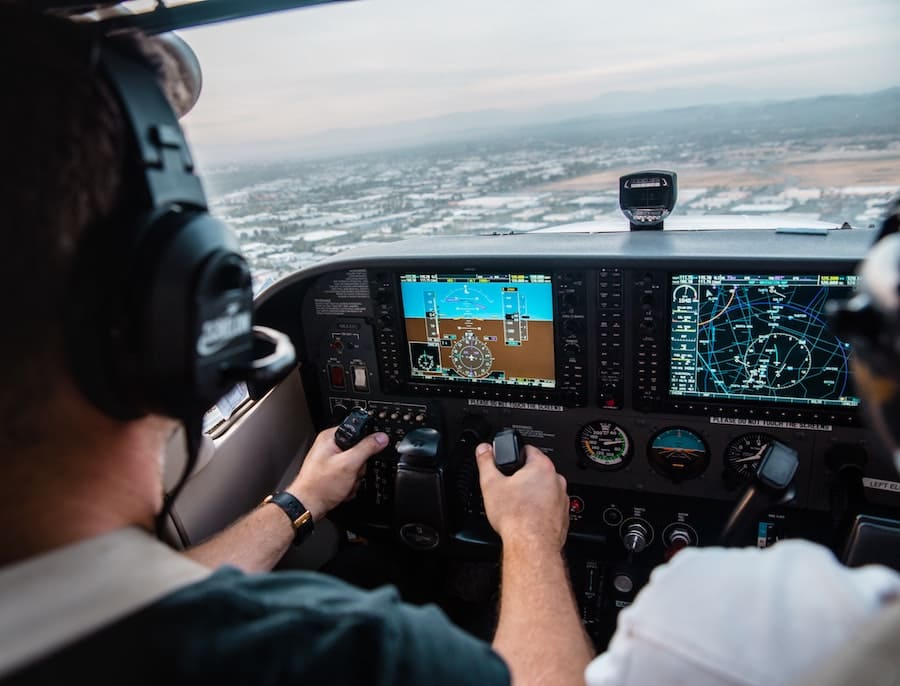
Is it hard to become a pilot?
Pilot training takes a lot out of you. Not only the theoretical part, but also the flight experience to gain requires endurance and discipline.
Your goal, towards which you want to work, also plays a role. If you want to go for a ride with friends on the plane at the weekend, the training is much less than if you want to sit in an airline cockpit.
Where are pilots wanted?
Commercial pilots are currently being sought almost everywhere. But lack of pilots does not mean that every pilot with a license gets a job.
Rather, a shortage of pilots means that there are no suitable pilots on the market. Because the requirements for airline pilots go far beyond those necessary to obtain a license.
How do I become a pilot with Lufthansa?
Lufthansa had its own flight school for many years. I was in one of the last courses that were offered.
Unfortunately the flight school in Bremen is now a corporate flight school. So Lufthansa trains not only for itself, but for all airlines in the Group.
After your training, you can then be employed by a Group company. That may or may not be Lufthansa. Unfortunately, there is currently no other way to get into the cockpit at Lufthansa.
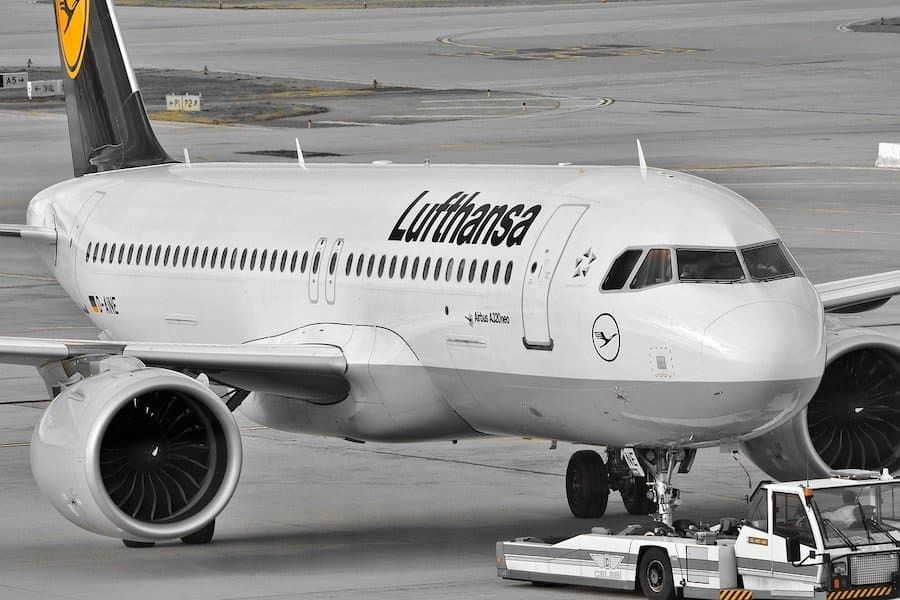
To become a pilot, which airline?
At the moment a lot of airlines are looking for pilots. Which means that there are quite a few jobs for pilots worldwide.
Which airline you finally apply to depends, in my opinion, more on you personally.
Are you ready to move to a foreign country for the job? What cultural differences will you encounter? Do you speak the local language?
In the end, a lot depends on the hiring criteria of the airlines.
Pilot after training, after military service, after engineering studies? Pilot or student, police officer, doctor, air traffic controller, lawyer, flight attendant, or as a career changer?
Your flying career depends very much on your state of health. Only if you have a valid medical (that is the medical certificate) you are allowed to fly.
Much faster than in any other profession, you can lose your medical fitness and become disabled. Therefore it is important to have a second leg to stand on.
If you are enthusiastic about the profession of a pilot only after your training, studies or several years of professional experience, this is not an obstacle at first.
Nevertheless, you should be aware that your ability to learn decreases with increasing age. It is often observed that older flight students find training more difficult.
In addition, a pilot license is very expensive.
After a certain age, the training is no longer profitable. The costs are then too high, the airlines no longer hire you and the risk of losing your medical certificate increases exponentially.
Become a pilot without money?
Pilot training costs a lot of money and involves a financial risk. If you don't have any financial means at your disposal, there are several possibilities.
There are pilots who have been paid for their training by the employment office. But that is unfortunately the exception.

Most flight students finance their training with a loan. However, there are a few things you need to consider here, as I describe in this article.
Much more likely you have the chance to get a place in a cadet training program of an airline. These are sometimes pre-financed or offer other financing models with certain safeguards
This makes it possible to provide training to people who do not have the necessary financial means.
Are pilot jobs hard to get? Is it hard to get a pilot job?
Pilot jobs require very special demands on you as a pilot.
In addition to your flying skills, the airlines have a corporate philosophy and therefore other standards that you have to meet as a pilot.
I personally believe that many applicants get in their own way and are too eager to show themselves from their best side.
Admitting weaknesses is generally difficult for people. But that's exactly what the selection tests are supposed to show and only then the airline decides whether you fit the company philosophy or not.
Therefore, the question is not easy to answer with yes or no.
What are pilots selected for? What are candidates selected according to?
Pilots are selected according to many different criteria.
In selection procedures, pilots are tested for attention, memory, spatial orientation, psychomotor skills, logic, knowledge of mathematics and physics, and technical understanding.

man reading burning newspaper
In addition, psychological selection procedures, such as group games, are carried out in which, for example, your behaviour and decision-making are tested.
Pilot without experience?
Yes, that is also possible. There are pilot training courses that train you to become an airline pilot without any flying experience. These continuous training courses are often called Ab-Initio or Cadet training.
Pilot without a job?
Unfortunately there are many pilots who have a commercial pilot license, but are still unemployed.
Lack of pilots does not mean that there are no pilots. It rather means that there are too few suitable pilots.
Those who have a pilot licence do not necessarily have to be suitable for working in an airline cockpit.
It is comparable to football. Not everyone who knows something about soccer is a good soccer player. The coach of a national team only selects the best players.
This is also the case with airlines and their pilots.
Therefore you should plan your pilot career and also know the risks of pilots.
How you approach this and which risks you should know, you will find out in my book. It is especially important to me to enlighten you here so that you can live your dream and not be unemployed due to high debts.
Are pilots needed? Is the pilot job automated? Are pilots being replaced?
Pilots will still be needed in the future. Even if cockpit automation increases, pilots will still have full control of the aircraft.
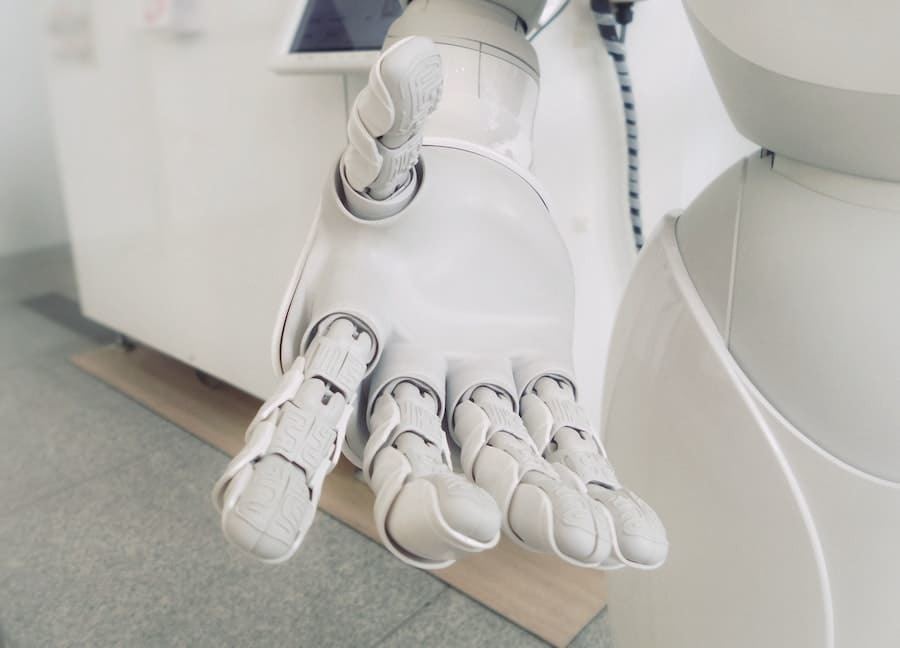
Artificial intelligence is being further developed, but according to leading researchers in this field, artificial intelligence will not be able to take over the complex decision-making processes in the cockpit.
Prerequisite as a pilot
Pilot, which subjects are important?
If you want to lay the foundation for your career as a pilot at an early age, you should not deselect math and physics at school. You need the knowledge from these subjects during your training.
Aircrafts fly due to physical processes.
Did you know that the speed and altitude are still physically determined on every plane?
These processes and much more are prerequisites for you as a pilot.
Pilots, what languages? Pilot without English? Pilot without French?
The international language in aviation is English.
Without English, nothing works. Manuals, aircraft systems and radio communications are all available only in English.
French is also an official language of aviation, but you can get along fine without French, unless you want to fly with an airline that has its headquarters in a French speaking country.
In this case, knowledge of the language may well be a prerequisite for employment. After all, the most important communication in the cockpit takes place between the pilots.
Therefore the national language of an airline is often a prerequisite.
Pilot, what skills are important? Pilot, what qualifications do I need?
In addition to good skills in math, physics and English, pilot tests will check your memory, logical thinking, perception, attention, alertness, concentration, spatial orientation and multiple stresses.

As a pilot you have to be good in all areas and have to be slightly above average in test results. In my article about the pilot test I will show you what the tests look like.
You also need to have personality traits for working in a multi-crew cockpit (cockpit with several crew members).
These include the ability to work in a team, communication, problem solving, decision making and many more. Because flying is a team effort and it is essential that the cooperation in the cockpit works smoothly.
So you have to bring along certain basic requirements for the profession of a pilot. You will then train all other qualities extensively during your pilot training.
Pilot without soft voice?
A soft voice is not a prerequisite for the pilot job.
Depending on the voice color, it has a different effect on the person you are talking to, which you may unconsciously influence during an interview.
But it should not be an obstacle for you and certainly no reason not to take up the profession.
Becoming a pilot with points in Flensburg? Becoming a pilot with road traffic offenses?
A basic requirement as a pilot is that you follow the rules. You need to have very good reasons why you deviate from rules, regulations and procedures.
An airline therefore looks closely at who they are hiring.
If you cannot play by rules on the road, you probably won't do that in the cockpit either, so the cards are stacked against you.
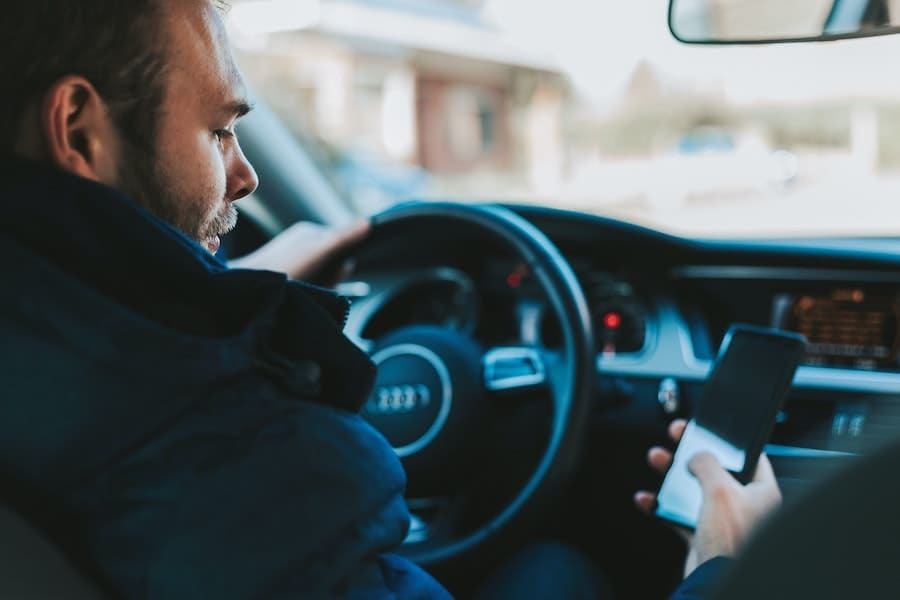
Not to indicate traffic offenses (if it is even possible to conceal something) also speaks completely against the basic requirement of the pilot to admit mistakes and to deal with them openly.
So be honest and stick to the rules.
Pilot with one eye? Pilot with poor eyesight?
Vision defects are among the most common reasons why the profession of the pilot remains out of reach for many.
For example, there are certain limits for your vision that your eyes must not exceed.
Visual impairments can be well compensated today with visual aids, such as glasses and contact lenses, and under certain conditions, laser surgery does not get in the way of your pilot career.
There is also a case where a pilot flew with only one eye. But this pilot had already collected 20,000 flying hours before losing it.
If you want to start your training with one eye, you have no chance to work in an Airliner cockpit.
Are pilots allowed to wear glasses? Can pilots wear contact lenses?
Yes, both are possible. Both glasses and contact lenses are permitted if the defective vision does not exceed certain limits.
The limits always vary a little from country to country, so you have to check the exact values with your Aviation authority.

If you need glasses or contact lenses and are a pilot, you must always have either two glasses or two pairs of contact lenses with you.
If your glasses break on a flight, you will not be allowed to fly again, until you have a second one as a replacement.
Are pilots allowed to do lasik?
Yes, under certain circumstances, it is possible.
Your vision should not exceed a certain defective vision before surgery.
In addition, the results of the operation must be thoroughly tested by specialized flight physicians and authorities. Eye surgeries are now standard surgeries.
Although the risk is low, there may be, among other things, cloudiness of the lens and a worsening of the defective vision of the original defect.
Then the medical airworthiness is no longer given and you are no longer allowed to fly an airplane commercially.
Pilot with red-green weakness?
In a cockpit, many values, such as the oil temperature, can be seen on displays. There is usually a green area for normal operating conditions and a red one for an abnormal conditions.
You have to be able to make this distinction, because an abnormal operating condition can have dangerous effects.
It's just one example of many why a red-green weakness leads to flight incapacitation and you can't become a pilot with it.
Pilot without spatial vision?
Imagine being a pilot and flying a passenger plane in a cloud layer towards the runway with a 250km/h. Just seconds before touchdown, you get out of the cloud layer and see the runway in front of you.
Then you need to be able to spatially assess your position and flight attitude relative to the runway, to be able to intercept the aircraft at the right moment and land gently on the runway.
Spatial vision is also very important as a pilot.
If you lack the three-dimensional perception, you may land the plane too hard and the landing gear or other components of the plane could be damaged.
Pilot with hearing aid? Problems with pressure compensation? Torn eardrum?
The human ear not only perceives voices and warning sound, but is also responsible for our sense of balance.
This gives our brain information about our location in three-dimensional space and perceives movements.

So the ear is a very important organ for you as a pilot.
Any impairment of the ear is therefore bad.
A final diagnosis, whether you are still airworthy with your physical complaints, must make your medical examiner.
Pilot with pacemaker?
As a pilot, you need a good basic fitness and you have to be healthy. With a pacemaker, you won't be able to sit in a cockpit. Here is an example that shows you why this is not possible.
You accelerate the plane on the runway to over 200 km/h. An engine fails just before taking off. The runway is too short to stop and you have to get the into the air now.
At this moment, you realize that your colleague with a pacemaker has suffered a shock as a result of the engine failure. The pacemaker is no longer able to get your colleague's heart into the right frequency and he is no longer able to perform his duties.
Now you have two problems at once and are alone in the cockpit and have to fly the plane.
You are also trained for this case, but the last thing you need, if the engine fails is for the colleague to fail. Therefore, pilots should only sit in the cockpit if they are really fit.
You also don't build a part into your car that you know might break. As a pilot, you are part of the aircraft's safety system. Therefore, becoming or being a pilot with pacemaker is not possible.
Pilot with MSA?
Multi-system atrophy (MSA) is a degenerative neurological disorder. For the pilot profession, however, your brain needs to be fully functional.
Therefore, also with MSA, you will not have the chance to become a pilot.
An example of why it is so important for pilots to be healthy can be read in the question above "Pilot with pacemaker."
Pilot after stroke?
A stroke is an acute circulatory disorder in the brain and is therefore a life-threatening situation. It is often a matter of life and death.
In a plane 10km above ground a stroke is even more critical. It is a matter of minutes, because every minute the brain is not supplied with oxygen leaves irreparable damage.

But even with a very fast descent you still need 20-25 minutes until you are on the ground and you can be treated medically correct as a stroke patient.
If you survive this, the question is what your state of health is like.
After a first stroke there is a high risk of another stroke or heart disease.
Your career as a pilot is over.
Pilot with diabetes?
In the case of diabetes, it depends on the particular form.
You may even receive a medical certificate so you can work as a pilot.
You owe this to progress in medicine and treatment methods, which are constantly being improved.
Pilot with ADHD?
The Attention Deficit Hyperactivity Disorder (ADHD) is not a disease you need to report or specify. Still, you have to pass the pilot tests.
Depending on the severity, your behavior will be noticed and can then lead to rejection.
Another problem is the lower stress resilience. But as a pilot, you have to be stress-resistant.
Therefore, the profession pilot will not come true either.
Why is a pilot not allowed to have a seal? Pilot with dental filling?
The pilots in former times were almost exclusively in the military.
The military lost more pilots to lax selection procedures and medical failures in World War I, than to enemy fire. Therefore the military doctors established the first medical standards in aviation.
With the evolvement of the aircrafts into jet planes, the strain on the human body continued to increase.
The temperature and pressure changes as well as G loads have an impact on the usual metal seals, which could become dangerous. As a result, ceramic seals were eventually accepted.
In today's civil aviation, you can also have dental fillings as a pilot.
Nevertheless, you should pay as much attention to your dental health as to your general state of health.
Because the constant changes in temperature, pressure and humidity can lead to toothache and affect your performance in the cockpit.
Pilots without legs, without arms, or other limbs?
As has been mentioned here more often, your health status is important for the profession as a pilot. Even though there are pilots in the US who control a small plane without legs or arms, this is unthinkable in commercial aviation.
Are pilots allowed to smoke?
If you smoke, then your lungs are not able to absorb the same amount of oxygen as the lungs of a non-smoker.

Due to the thinner air in an airplane in the cruising flight, you have less oxygen per breath. You make it difficult for your lungs to absorb oxygen by smoking.
Therefore, every medical examiner will recommend you to stop. But it is not forbidden and you are allowed to smoke as a pilot.
Are pilots allowed to have tattoos?
As a pilot, you are the flagship of your airline. She wants to convey a certain image and you should represent it with your uniform. Tattoos are not part of the airline's image.
I don't know all the internal airline policies, but many allow you to have tattoos as a pilot, as long as they are not visible.
For example, if you have tattoos on your arm, you have to put on a long shirt even in midsummer.
Are pilots allowed to have a beard? Pilot with long hair?
These questions cannot be answered sweepingly. It is always dependent on an airline's internal policies.
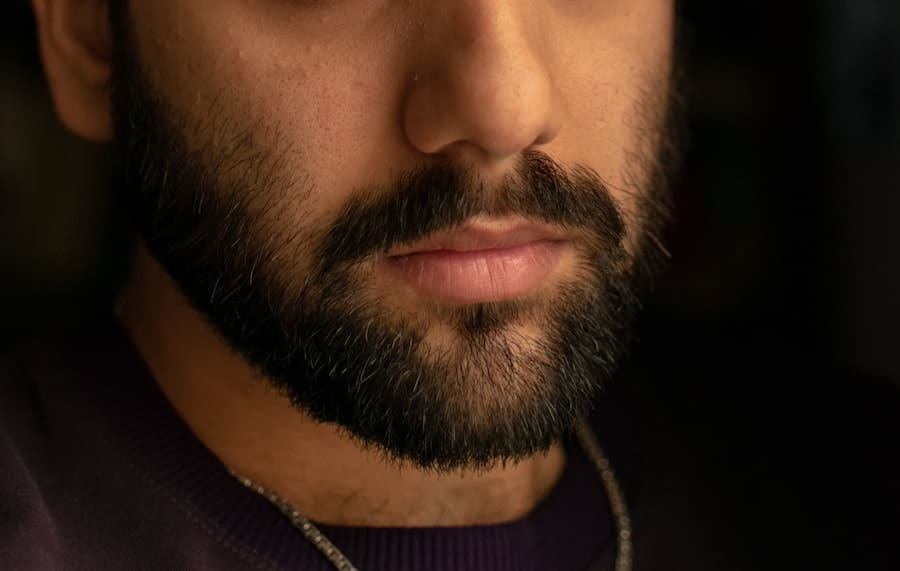
Some airlines dictate very precisely what a beard should look like or how long hair may be and how it may look.
Pilot with fear of flying, with claustrophobia or with fear of heights?
Everyone has fears. But a pilot with a fear of flying is a combination that doesn't work.
If all systems fail on an airplane, you are the only two systems that can safely land the plan.

A pilot must be capable of action, until the aircraft stops and do everything possible to save the lives of his passengers, the crew, his life and the aircraft itself.
Fear is hindering.
Some planes have a very small cockpit. But if claustrophobia or fear of heights limit you so much that you can no longer do your job, you can discuss it with a medical examiner.
Becoming a pilot despite depressions?
Statistically, every person suffers from depression at least once in their lifetime.
The question of how to treat pilots with depression has been discussed a lot in the context of the Germanwings disaster.
Ultimately, it is an assessment of your flight physician and the authorities of whether you need to get, keep, or give up your medical approval with a diagnosed depression.
Flying
How do pilots control an aircraft?
Pilots control planes over control surfaces. These primary control surfaces are the ailerons, elevator and rudders. A pilot controls these surfaces from the cockpit via a so-called yoke or sidestick.
A yoke is the control wheel in a cockpit, whereas the sidestick is more reminiscent of a Joystick.

If you move the yoke or sidestick to the right or left, the ailerons are activated and the aircraft flies to the right or left. If you move the yoke or sidestick forwards or backwards, the elevator is moved and the plane climbs or sinks.
For the rudder, there are two foot pedals coupled with each other. If you step on the right one, the plane nose moves to the right. If you step on the left one, the plane moves to the left.
Thus the aircraft nose is kept on the runway during takeoff and landing and then aligned even if the wind comes off the side, thereby pushing aircraft off the runway.
How do planes fly?
For a plane to fly, it needs to generate uplift. This is the responsibility of the wing, which has a special shape, called a wing profile.
The wing profile causes the air to split and flow above and below the wing. The air above has to travel a longer way than the air flowing around at the bottom.
This results in a lower pressure above the wing than below, which causes a force to act upwards known as uplift. That's how a airplane flies.
When do pilots use the autopilot?
The autopilot is like the cruise control of a car.
If you drive for several hours on the highway, it is also tiring, if nothing is going on. Just keeping track and speed ties capacity and fatigues.
The same applies to the autopilot, it takes over certain tasks, so that the pilots can focus on other things. Therefore, the autopilot is switched on a few minutes after takeoff until a few minutes before landing.
Pilots don't tire as quickly as if they had to fly everything by hand and can work longer during the day.
In addition, it leads to an increase in safety, as the focus of the pilots is more on monitoring the flight systems.
Here you can find out even more about the everyday working life of pilots.
What do pilots do during cruise flight?
Drink Coffee! 🙂 That, however, is not the main task. First and foremost, the autopilot and the flight route are monitored.
Although the autopilot can steer the aircraft, it is not able to take shortcuts, change routs or avoid a thunderstorm. These inputs must be made by the pilots.
The autopilot also doesn't always make that what it is supposed to.
You certainly know that from your computer. Therefore, you must constantly monitor the autopilot.
In addition, all other systems must be monitored to ensure that they function smoothly. Detecting disturbances early is important because they can severely affect the course of the flight.
You also have to keep an eye on fuel consumption all the time. The tanks can have a leak and the fuel just runs out. You want to determine this early enough, before there is no fuel left in the tank.
As you can see, there are many tasks pilots have to do during the flight.
How do pilots know the route?
In the past, fires were lit on the ground so pilots could orient themselves. Today, the whole thing works over radio waves, yet the ground stations on the maps are still called radio beacons.
On the plane, a pilot can see the direction to a radio beacon over his instruments and navigate, even without seeing anything. In addition to the beacons, GPS is mainly used today.
The aircraft knows its GPS position and has all the maps stored in the navigation system. There are very many defined GPS points on Earth that are connected by lines. These lines are the so-called airways.
An aircraft can fly from A to B via the airways. This results in a route as in the case of a car. First follow one road and turn onto the next at a certain point.
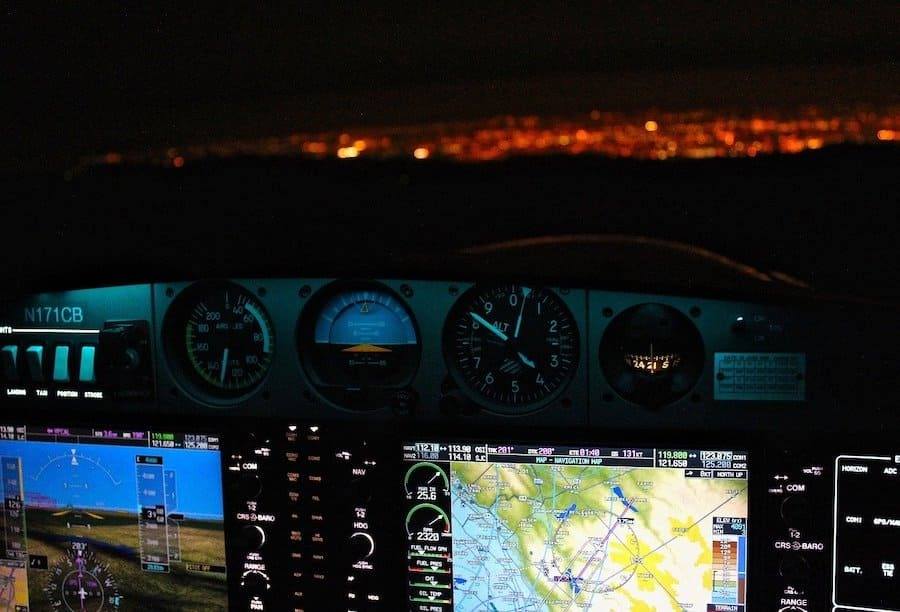
This route must be approved by air traffic control before the flight.
In addition, this route is programmed in the plane, so that the autopilot also knows the way.
The route must be followed by the pilots on the map at any time.
Navigating is still one of the most important tasks for pilots today. After all, the pilot is always responsible for the route.
Therefore, in your pilot training you learn how to navigate correctly so that you always find your destination.
How do pilots find the runway?
The runway is found by pilots using the navigation tools and by the assistance of air traffic control, which can guide the aircraft via radar. The air traffic controller therefore supports the pilots by radio.
The navigation systems have GPS and the radio beacon, which I have described to you in the preceding question.
This allows pilots to find their way to the runway at any time and land safely.
How do Pilots communicate with the radar controller?
Today, the majority of communication between pilots and radars controller still works via radio communication. This is like it used to be in the past with two radios.
Usually there are three radios installed on the plane, so we can still transmit if one fails.

Newer aircrafts use yet another system that also works by radio. The data exchange is digitally sent from the controller to the aircraft and appears there on a display. Then the pilots can confirm receipt and, if necessary, send data back.
This relieves the partly overloaded radio frequencies.
Ultimately, radio communication is vital in today's crowded airspaces. So you learn to communicate via radio early in your pilot training.
So if you want to get your pilot's license, you also need an additional authorization for radio communication.
Pilot at night? Where do pilots sleep? Where do pilots and the crew sleep? How do pilots sleep?
As a pilot you also fly through the night and that makes you tired. Since there are always two pilots sitting in the cockpit, it is allowed to speak off, so that one of them is allowed to make a power nap.
A power nap is a short sleep of a maximum of 30 minutes and can only take place during cruise flight.
But there is no bed at your disposal, but you sleep on your seat in the cockpit.
If the flight routes get too long, there are three pilots on a flight. Then always two pilots fly and the third has a break. Mostly there is a separate relaxation room with a small bed in the cockpit. There you can lie down and sleep.
There is also a sleeping area for cabin crew on long flights. Then the cabin crew alternate with sleeping and working.
For takeoff and landing, however, everyone has to sit in their seat again, in the cockpit and in the cabin.
Where do pilots go to the toilet?
Toilets are almost always installed on a plane. These are used by passengers and also by the crew alike. There is no separate toilet for pilots.
Pilot's salary
Which pilot earns the most? Salary Ryanair? What does a pilot earn at Lufthansa?
There are comparison portals on the Internet where the salary of pilots is listed.
Of course, one airline pays more than the other. But before comparing the pure final salary, you should keep other issues in mind.
Costs of living varies from country to country. In addition, there are huge differences in social benefits, such as health insurance, pension coverage and occupational disability coverage, offered to you by an airline.
A final topic is the career opportunity. Pilots do not just change their employer, because a lot of issues, such as the license, career opportunities, and social security, depend on it.
Who earns more, pilot or air traffic controller, pilot or doctor, pilot or captain? What is the starting salary as a pilot?
Pilots are often considered the top earners. But that is not always the case.
Many pilots start their pilot careers with a very low salary, if they are not hired by a major airline right away.
Air traffic controller or engineers often earn significantly more. Doctors often earn more than pilots as well.
If you have gained enough experience and have been trained to become a captain, then of course your salary will also increase, due to your role as captain.
But if you want to take up the profession of a pilot because of the money, you won't be happy and should choose another job.
Does the salary increase?
At large airlines, pilots are often employed according to collective bargaining agreements. There, an increase in salary is usually settled in there.
The more flying experience a pilot has gained with an airline, the more the salary increases.
Even if you take on another function, like the Captain's, your salary will increase.
Pilot and leisure
How often are pilots at home? Pilot and family compatible?
As a pilot, you will be travelling a lot. But that doesn't mean you are not home in the evenings.
Especially low-cost airlines often have schedules, where the duty starts at the home airport in the morning and ends there in the evening. Then a pilot's day is comparable to an office day.
If you work for an Airline that always sends you on tour for several days, you will not be at home in the evening that often, but you have several days off after a duty.

However, your social environment, like friends and family, must have a greater understanding of your duty hours and schedules. But, this is the case for any profession with shift work, such as the police, fire brigade or doctors.
Pilot hotel? Pilot place of residence?
If your airline compiles a schedule for you, where you travel for several days, you will stay at a hotel.
As a rule, your airline will take care of the hotel and transportation from the airport to the hotel and back. But there are also airlines where the crew has to take care of their hotel on their own.
The time at the hotel is reduced more and more in order to save costs.
As a result, you have little time on site to get to know the cities, countries and cultures.
Pilot and holiday?
Of course, as a Pilot, you also have a vacation. The holiday is usually regulated in the collective agreement, in accordance with legal regulations, or in the individually agreed employment contract.
Pilot retired
Retirement age? How long to work? Pilot when to retire? Pilot until 65?
The legal retirement age in many countries of the world is currently 65, but will increase in the near future. As a pilot, you have a problem. Because you are only allowed to work as a professional pilot up to a maximum of 65 years.
Most Pilots, however, retire earlier. From 60 onwards, separate requirements apply to you and in some cases pilots already retire at 55. Mostly for medical reasons, when the medical certificate is no longer issued. Then your career as a pilot is over.
This creates a gap to the normal retirement age, which must be covered by company agreements or by private provision.
Risks and side effects
Pilots and cancer risk? Cancer rates?
Today, there is no study or research that has been able to correctly and unequivocally establish a link between flying and a cancer rate.
Commercial aviation is only 100 years old and the workload and flight hours have only increased so far, so that long-term studies are not yet available.
Still, as a pilot, you get more radioactive radiation than you down on Earth. Therefore, each pilot has a so-called radiation account, which is managed and monitored by the airline.
If you reach your maximum annual dose, you have to stay on the ground.
Any questions?
Do you have further questions or was a question not answered sufficiently comprehensible? Then take the opportunity and write me briefly via the contact form. I will then answer the questions by mail and if necessary expand this FaQ with your question.
Was the site helpful to you?
Then share it with your friends! Because they should benefit from the content, too.
